How Ancillary EPA is Calculated
Ancillary EPA calculation method in Shapemaker
The Eurocode does not specify a precise method for calculating effective projected areas on ancillaries. However, a well-established approach is provided by the TIA-222 standard. This method involves calculating the EPA of the antenna faces — specifically, the normal face (EPAN) and the transverse face (EPAT). According to the TIA-222 standard, the total EPA of the ancillary can be determined using the following formula:
where
θ is the relative angle between the azimuth associated with the normal face of the ancillary and the wind direction
Ka is the shielding factor associated to the ancillary for which we calculate the EPA - see here how Shapemaker calculates shielding factors automatically
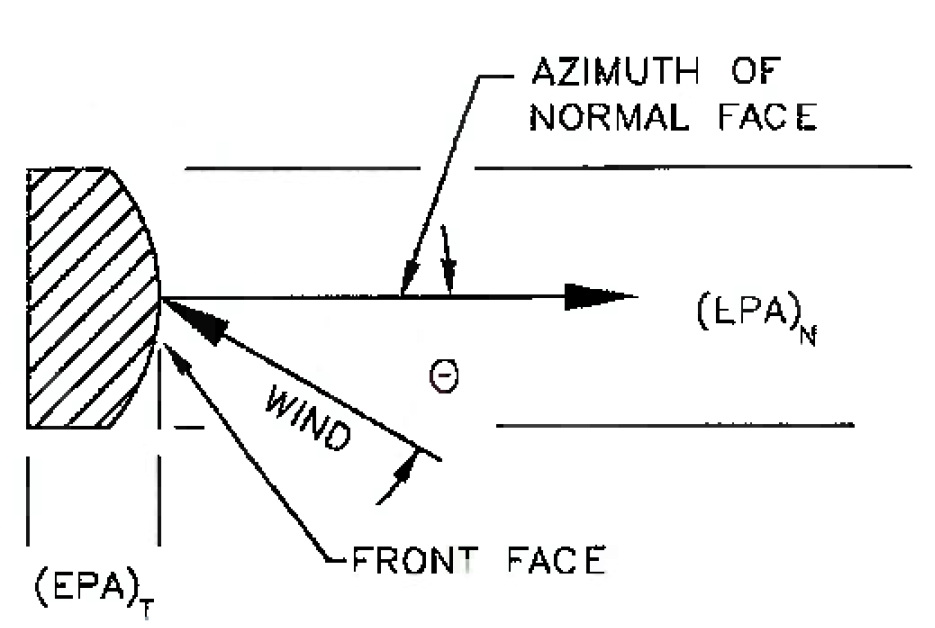
Force coefficients in Shapemaker (cf)
Several ancillary shapes have been identified for which the force coefficients and the EPA are calculated.
box
cylinder
dish
plane lattice
All ancillary types in the Shapemaker database are associated with a specific shape.
GSM/RRU/MHA/FTTA are box shapes
OMNI/GPS are cylinder shapes
All MW dishes are dish shapes
Dipole/Yagi are plane shapes
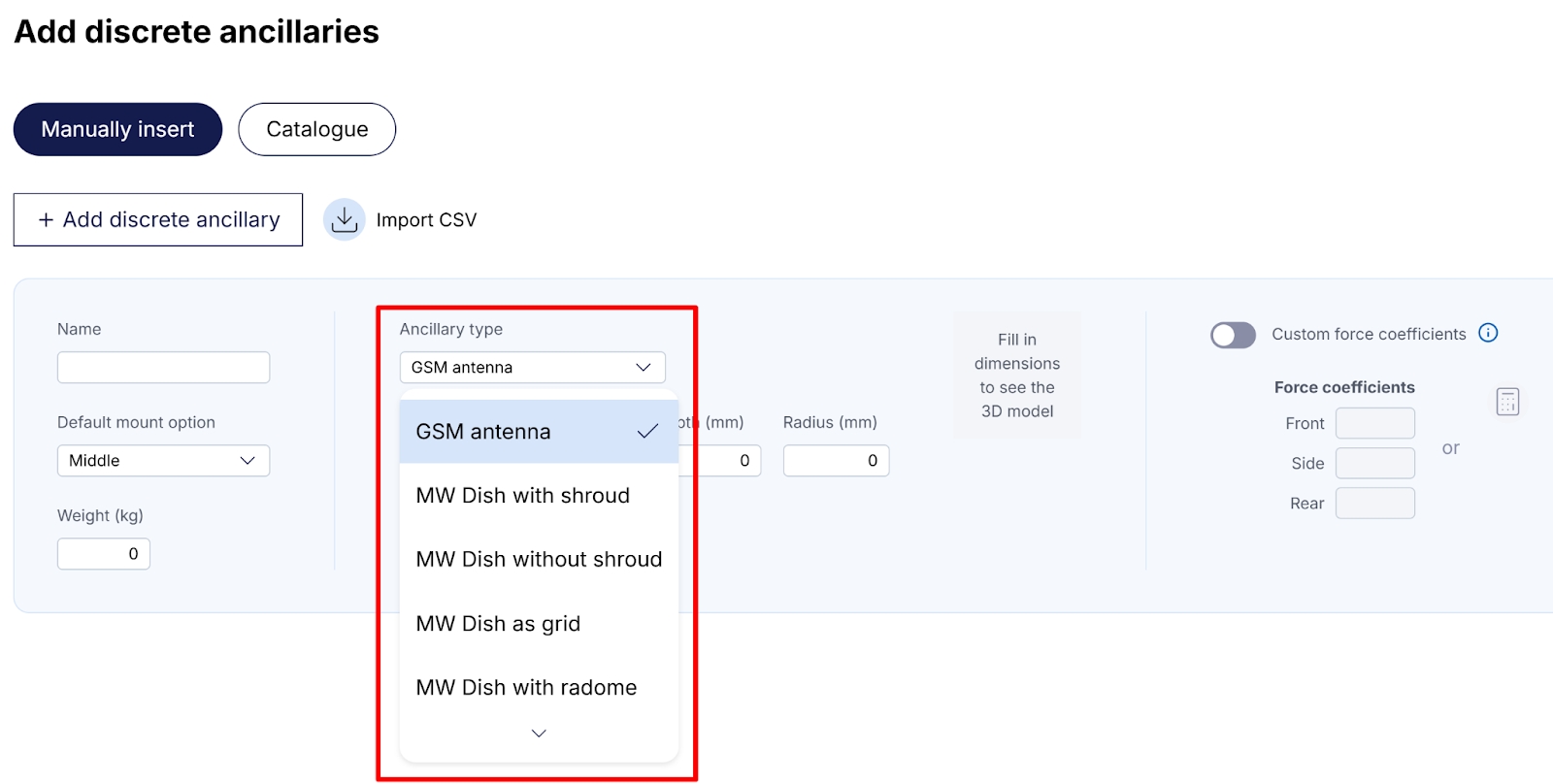
In Shapemaker there are 3 input methods for the force coefficient:
(default) calculated according to standards:
EN 1991-1-4 2005, Chapter 7.6, Chapter 7.9 and Chapter 7.11 for box, cylinder and plane lattice shapes respectively
TIA-222-I, Annex C for dishes
user input - specify directly the force coefficients for Front, Side and Rear of the ancillary
calculated based on forces from the manufacturer's technical sheets.
Example 1
EPA calculation of a box shape using EN 1991-1-4 and TIA-222-I
Ancillary specification: GSM Antenna: H2000 / W400 / D190 / R20 (mm).
Antenna azimuth: 0°.
Wind direction: 60°.
Dimensions below in meters.
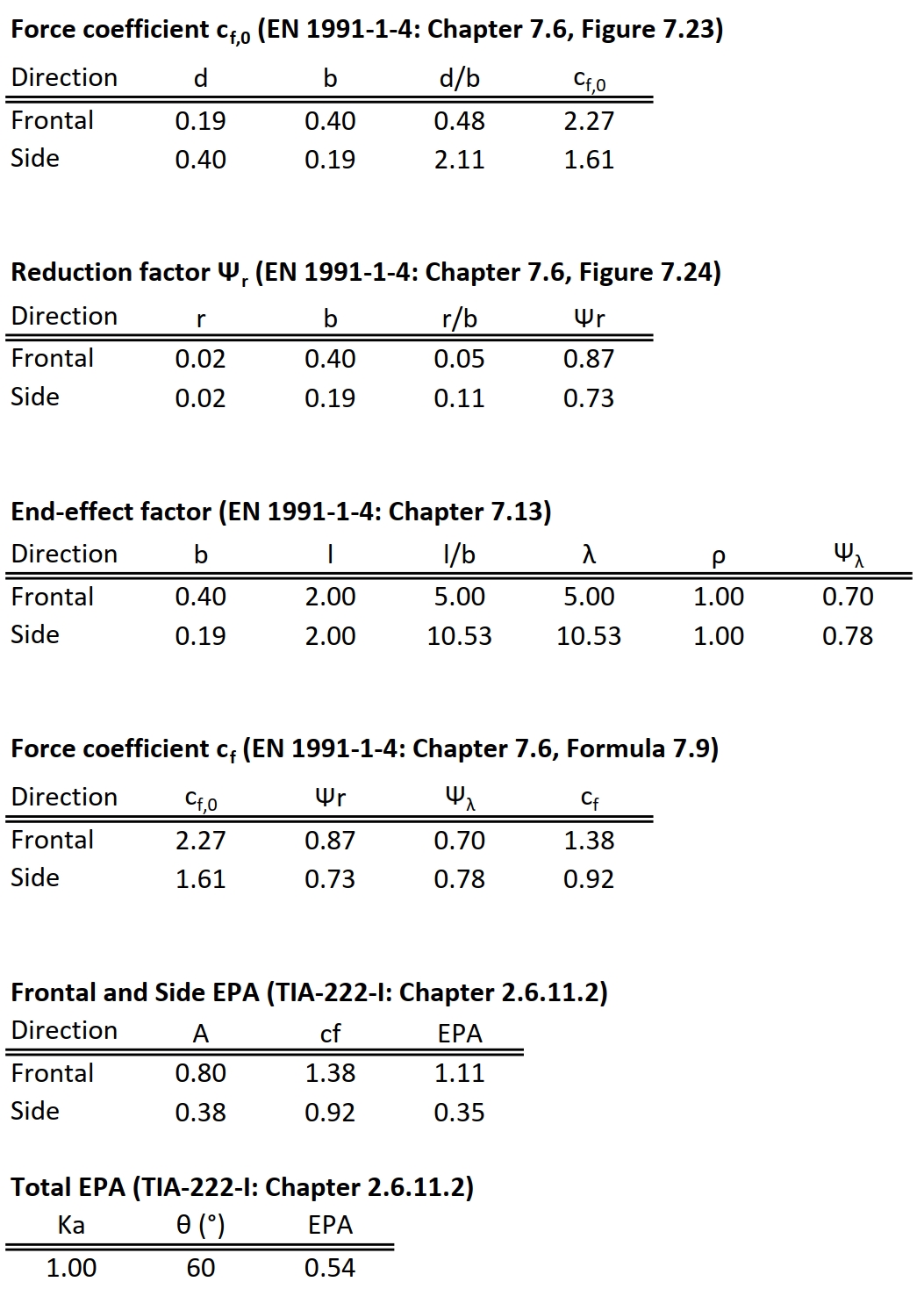
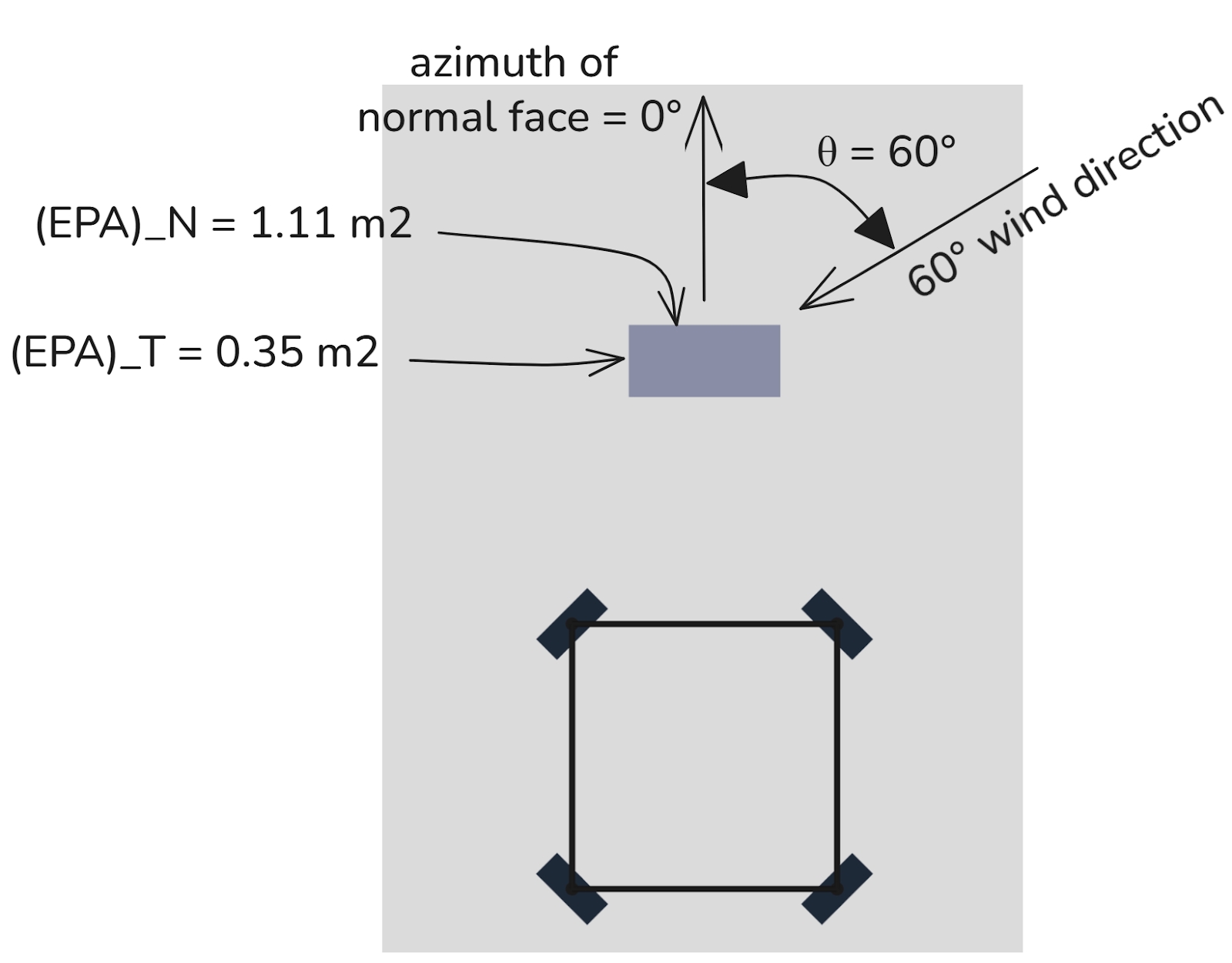
In the Shapemaker report, the EPA is presented separately as Area and cf,A. When you multiply them, you get the EPA for 60° wind direction.
EPA=Area×cf,A=0.729×0.744 = 0.54 m2

To be able to show the values in the report in one line and make the ancillaries table more compact, Area and cf are calculated as below.
EPA = 0.54 m2
Area=Afrontal⋅cos(θ)+Aside⋅sin(θ)
cf,A=EPAArea
Example 2
EPA calculation of a dish shape using TIA-222-I
Ancillary specification: MW Dish with shroud: Dia600 / Depth200 (mm).
MW Dish azimuth: 0°.
Wind direction: 50°.
Dimensions below in meters.
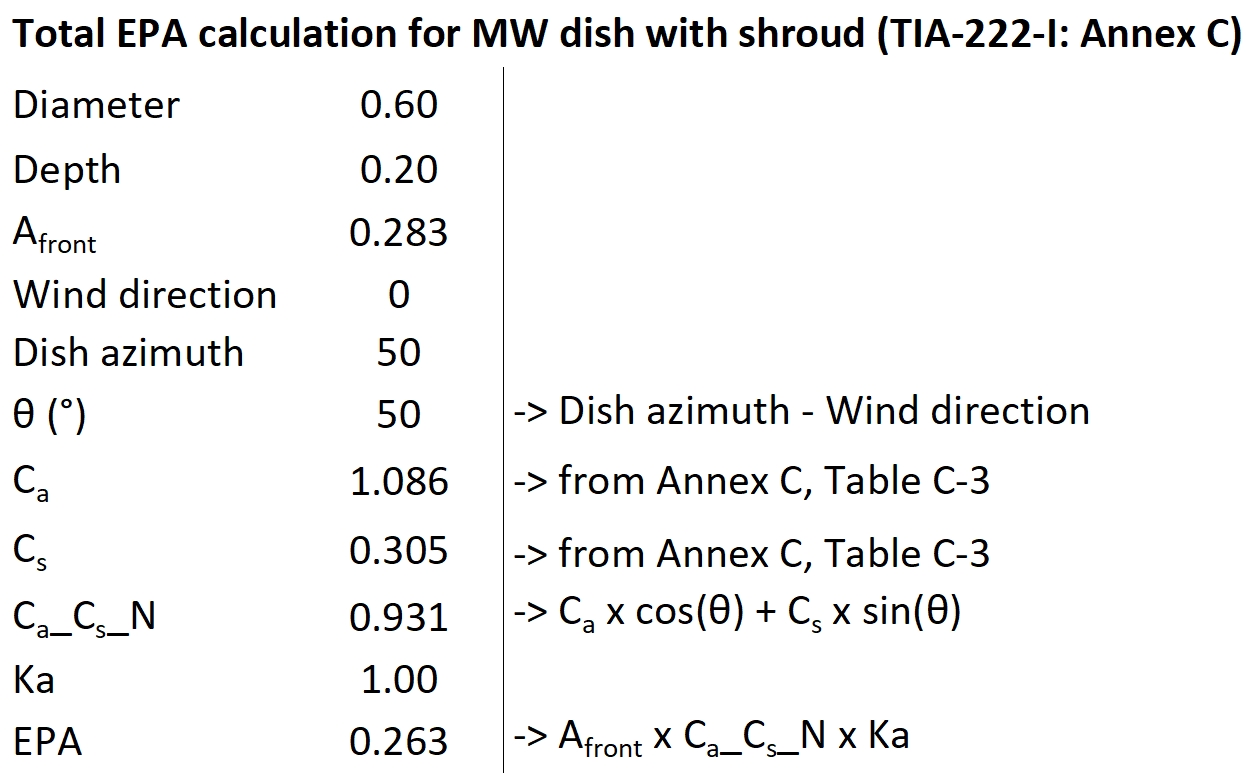
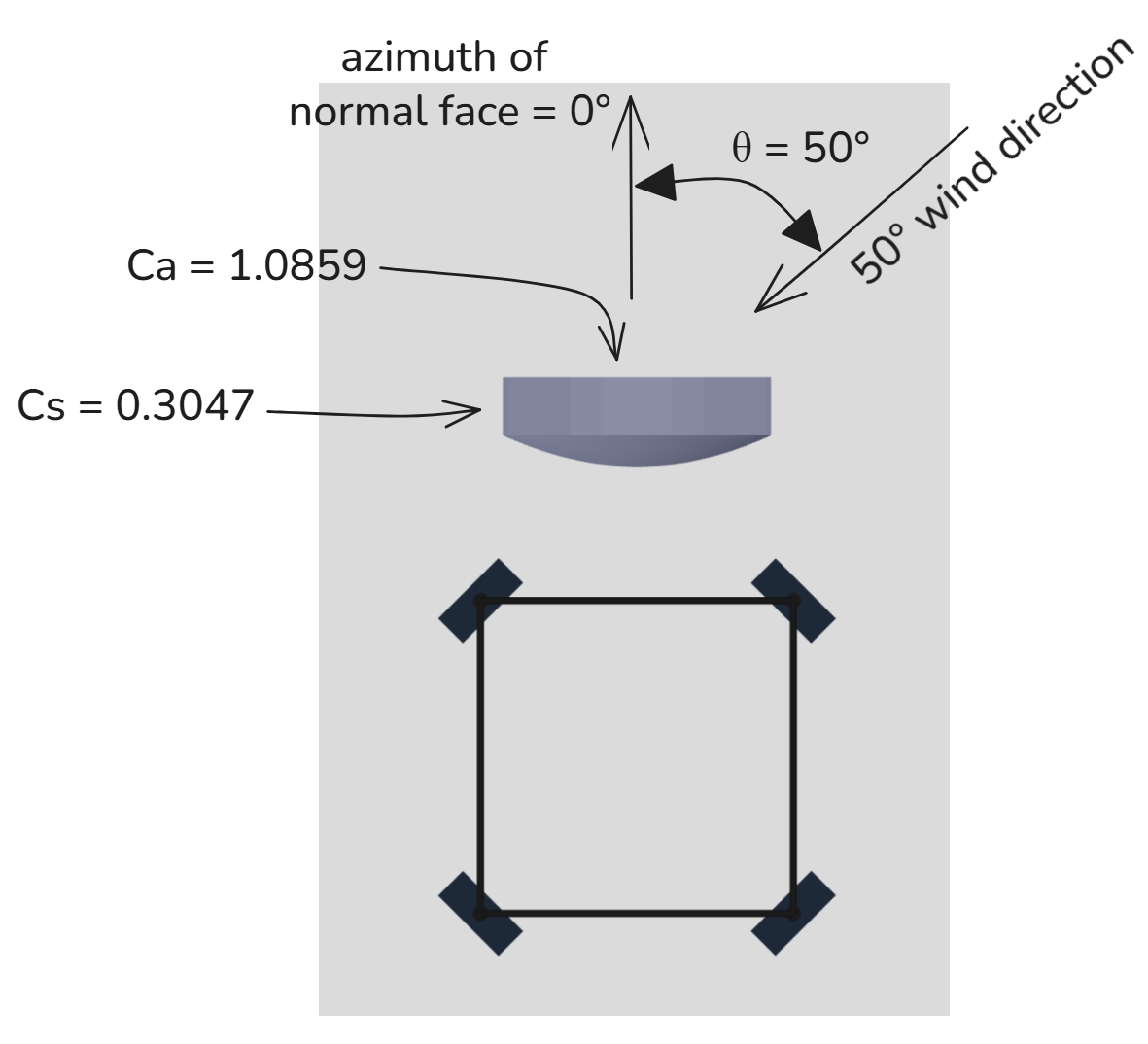
EPA in the Shapemaker report
EPA=Area×cf,A=0.283×0.932 = 0.263 m2

To be able to show the values in the report in one line and make the ancillaries table more compact, Area and cf are calculated as below.
EPA = 0.263 m2
Area=Afrontal⋅cos(θ)+Aside⋅sin(θ)
cf,A=EPAArea
EN 1991-1-4:2005, Eurocode 1: Actions on structures – Part 1-4: General actions – Wind actions.
TIA-222-I, Structural Standard for Antenna Supporting Structures, Antennas and Small Wind Turbines Support Structures, Telecommunications Industry Association, September 2023.
Last updated
Was this helpful?